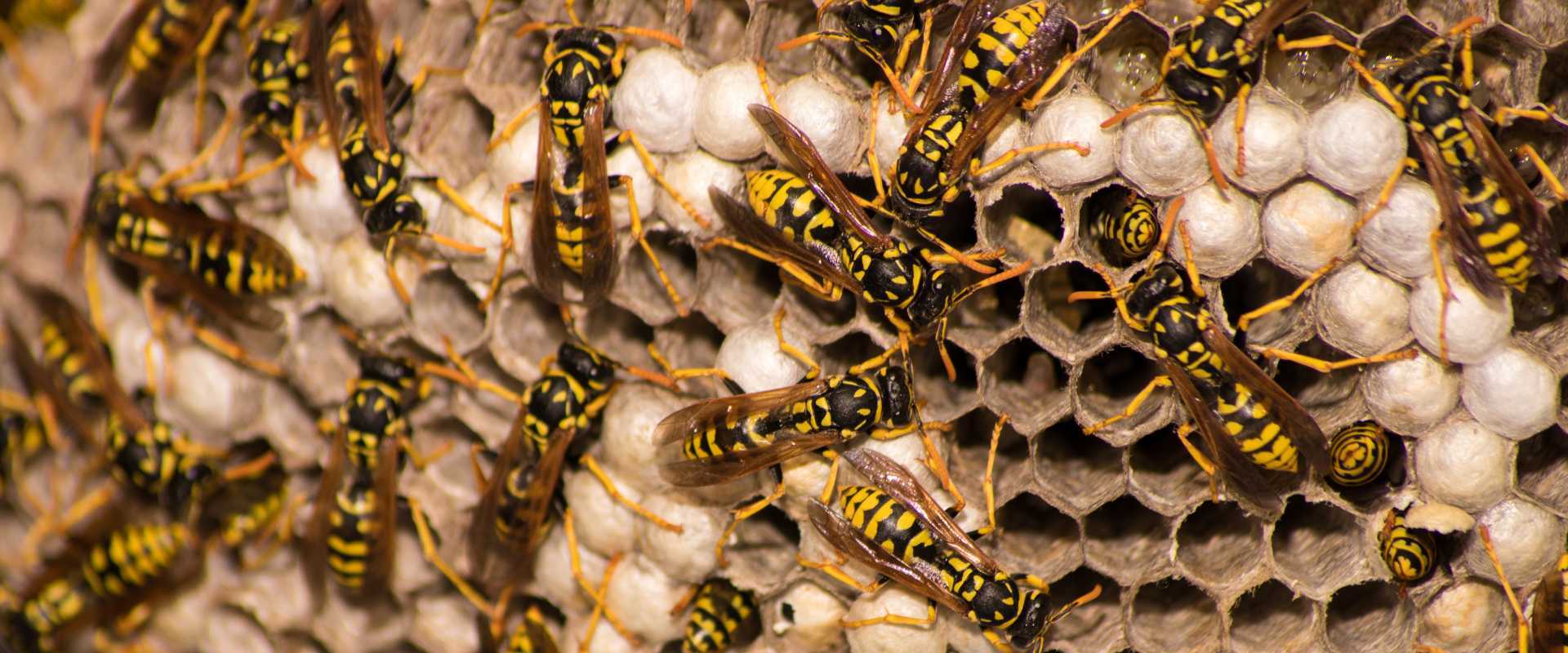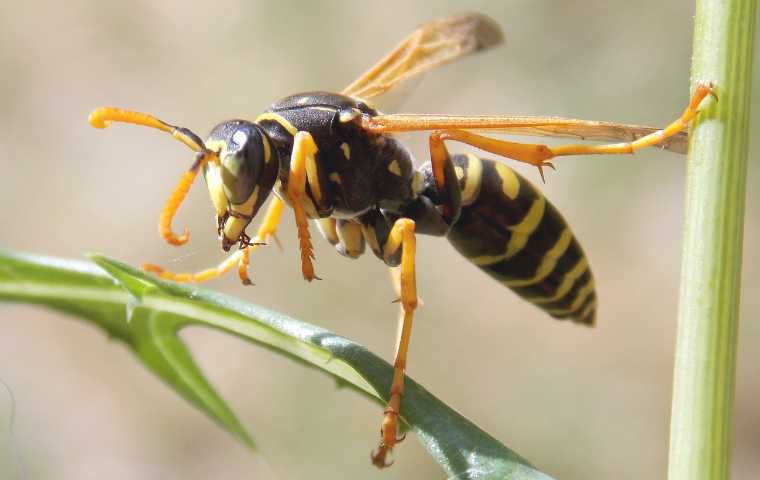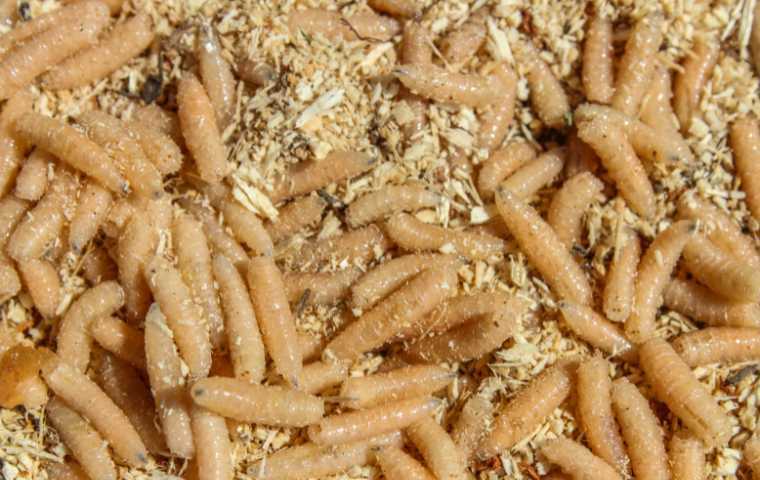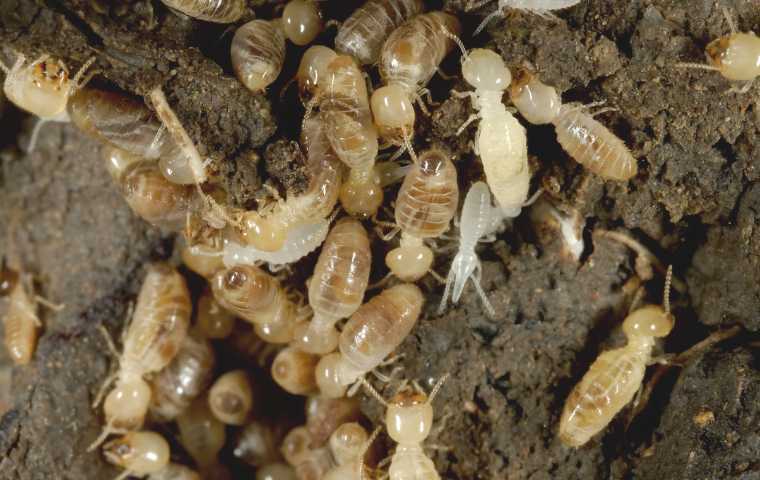
What Are Wasps?

Wasps are a diverse group of insect pests belonging to the order Hymenoptera, which includes many species with distinct characteristics and behaviors. They are typically characterized by their slender bodies, narrow waists, and often vibrant colors, such as yellow and black. Wasps play important ecological roles as predators, pollinators, and scavengers. Here is an overview of wasps:
- Taxonomy: Wasps belong to the order Hymenoptera, which includes other insects like bees and ants. They can be further categorized into two main groups: solitary wasps and social wasps.
- Anatomy: The anatomy of a wasp typically consists of three main parts: the head, thorax, and abdomen. They have two pairs of wings, with the forewings being larger than the hindwings. Wasps also possess a pair of antennae and biting mouthparts. The abdomen often has a noticeable constriction, giving wasps their characteristic narrow waist.
- Social Structure: Social wasps, like yellowjackets and paper wasps, live in colonies with a queen, worker wasps, and male wasps. Solitary wasps, on the other hand, live alone and do not form large colonies.
- Nesting Behavior: Social wasps build nests from paper-like material, which they create by chewing wood or plant fibers. Solitary wasps typically dig burrows or construct nests in small crevices.
- Life Cycle: In social wasp colonies, the queen lays eggs that develop into workers. These workers then help maintain the colony and raise new offspring. Male wasps are typically produced toward the end of the season. Solitary wasps lay their eggs individually, often providing a paralyzed insect or spider as food for their larvae.
- Diet: Adult wasps primarily feed on nectar and sweet substances. However, during the larval stage, they often hunt other insects to provide protein for their developing young. This makes them beneficial as natural pest controllers.
- Stinging Ability: Many wasp species are equipped with stingers, which they use for defense and to paralyze prey. Unlike honeybees, most wasps can sting multiple times without losing their stinger.
- Ecological Importance: Wasps play vital roles in ecosystems. They help control pest populations by preying on insects and are also important pollinators for some plant species. Their scavenging behavior contributes to the decomposition of dead organisms.
- Common Species: Common social wasp species include yellowjackets (Vespula spp.), paper wasps (Polistes spp.), and hornets (Vespa spp.). Solitary wasps include mud daubers (Sphecidae family) and cicada killers (Sphecius speciosus).
- Interactions with Humans: While wasps are essential for the environment, they can be considered pests when their nests are built in or near human dwellings. Their stings can be painful and may cause allergic reactions in some individuals.
Wasps are a diverse group of insects known for their distinctive anatomy, social and solitary species, nesting behaviors, and ecological roles. They contribute to ecosystems through predation, pollination, and scavenging, and they have a complex social structure in some species. While they are beneficial in many ways, human-wasp interactions can sometimes lead to conflicts and safety concerns.
What Types Of Wasps Are There?
Hornets: Hornets are large wasps known for their distinct black and white coloration. They build paper nests, often in trees or shrubs, and are social insects with organized colonies. They can be aggressive when defending their nests.
Yellowjackets: Yellowjackets are aggressive, ground-nesting wasps with yellow and black markings. They build paper nests underground or in structures. They are social insects and can be attracted to human food, especially in late summer.
Paper Wasps: Paper wasps are generally brown with yellow or reddish markings. They build umbrella-shaped paper nests often attached to eaves or tree branches. They are generally less aggressive than yellowjackets but will defend their nests if disturbed.
Mud Daubers: Mud daubers are solitary wasps known for creating nests from mud. They are typically black or metallic blue. They are not aggressive and primarily prey on spiders, which they paralyze and place in their mud nests as food for their offspring.
Cicada Killers: Cicada killers are large wasps known for hunting cicadas. They are typically brownish with yellow markings and create burrows in the ground to rear their young. They are generally not aggressive towards humans.
Tarantula Hawks: Tarantula hawks are strikingly colored wasps, often metallic blue or black with orange or red wings. They are known for preying on tarantulas and other large spiders. They are solitary insects and have a powerful sting but are not typically aggressive toward humans unless provoked.
Velvet Ants: Velvet ants are not true ants but wingless wasps. They are covered in dense, velvet-like hair and are typically brightly colored, such as red or orange. Velvet ants are solitary and are known for their painful stings. They are often called "cow killers" due to the potency of their sting, but they are not aggressive unless handled.
Great Black Wasps: Great black wasps (Sphex pensylvanicus) are large, solitary wasps with a striking black coloration. They are known for their unique nesting and hunting behavior, preying on grasshoppers and katydids. These beneficial insects also play a role in pollination and are generally not aggressive toward humans.
What Do Wasps Look Like?
Wasps display considerable diversity in their appearance, with variations in size, coloration, and specific features among different species. However, there are some general characteristics that can help you recognize a typical wasp's appearance:
- Body Shape: Wasps typically have a slender, elongated body shape, with a distinct waist-like constriction between the thorax and abdomen. This narrow waist is one of their key distinguishing features.
- Coloration: The coloration of wasps can vary, but many are known for their striking patterns of yellow and black or black and white. However, some species may be entirely black or have more subdued colors.
- Wings: Wasps have two pairs of wings, with the forewings being larger than the hindwings. When at rest, their wings are folded longitudinally along their body.
- Antennae: They have straight or slightly curved antennae that vary in length depending on the species.
- Eyes: Wasps have large compound eyes, which are often dark in color.
- Mouthparts: Their mouthparts are adapted for biting and chewing.
- Legs: Wasps have six long, slender legs, each ending in a claw for grasping and walking.
- Size: The size of wasps can range from a fraction of an inch to over an inch in length, depending on the species. Some, like the Asian giant hornet, can be quite large.
- Stinger: Most female wasps possess a stinger at the posterior end of their abdomen, which they can use for defense and to subdue prey.
The specific appearance of a wasp can vary significantly between species, and some may not fit the classic black and yellow coloration commonly associated with wasps. Additionally, males of some species may have distinct differences in coloration and size compared to females.
Some common wasp species you might encounter include yellowjackets (Vespula spp.), which are often yellow and black, and paper wasps (Polistes spp.), which can have more slender bodies and varying colors. Hornets (Vespa spp.) are larger wasps known for their striking appearance, often featuring black and white or black and yellow coloration.
While these are general characteristics of wasps, it's important to remember that there is considerable diversity among the thousands of wasp species worldwide, and some may not conform to these typical traits.
Learn more: What Do Wasps Look Like?
Where Are Wasps Found?
Wasps can be found in a variety of natural and human-made environments. Their distribution depends on factors like the species of wasp, the season, and local conditions. Here are some common places where you might encounter wasps:
- Gardens and Parks: Many wasp species are attracted to the nectar of flowers, making gardens and parks common places to find them, especially during the warmer months. They also help with pollination.
- Wooded Areas: Forests and wooded areas are natural habitats for numerous wasp species. You might come across solitary wasps that build nests in the ground or on plants in these environments.
- Orchards and Farmlands: Wasps can be found in agricultural areas, where they play a role in pollinating certain crops and help control pest populations.
- Residential Areas: Wasps are known to build nests in and around homes, including in eaves, attics, sheds, and wall cavities. You might find them near garbage cans or compost bins, where they scavenge for food.
- Structures and Buildings: Some wasp species, such as paper wasps, are known for building nests in sheltered locations, like under roof eaves, within wall voids, or in attics.
- Picnic Areas and Outdoor Dining: Yellowjackets are often attracted to sugary and protein-rich foods, so they can be found around picnic areas, outdoor dining locations, and trash bins.
- Hollow Trees and Tree Cavities: Certain species of wasps, like hornets, may build their nests in hollow trees or other cavities.
- Ground Nests: Solitary wasps often dig burrows in sandy or loose soil, so they can be encountered in open areas with suitable nesting conditions.
- Hiking Trails: While exploring hiking trails, you may come across various species of wasps, especially if you encounter wildflowers and other plants that attract them.
- Water Sources: Wasps may visit ponds, streams, and other water sources for hydration. They can also build nests in proximity to water.
- Outdoor Structures: Some wasp species, such as mud daubers, construct nests on the sides of buildings and other outdoor structures.
- Vegetation: Wasps can nest in shrubs, bushes, and trees. They might also forage for insects in the vegetation.
It's important to be cautious when dealing with wasps, especially if you find a nest near your home or in an area with a lot of human activity. Disturbing a wasp nest can lead to defensive behavior, and some individuals may be allergic to wasp stings, which can result in severe reactions. If you need to remove a wasp nest or manage a wasp infestation near your home, it's advisable to seek professional pest control assistance for safety and effective removal.
What Is The Life Cycle Of Wasps?
The life cycle of wasps varies depending on the species, but it generally consists of several stages, including egg, larva, pupa, and adult. Here's an overview of the typical life cycle of social wasps, like yellowjackets and paper wasps:
- Queen Establishment: The life cycle of social wasps usually begins in the spring when a fertilized overwintering queen emerges from hibernation. She seeks a suitable nesting site and begins building a small nest. The queen lays a few eggs, which develop into worker wasps.
- Worker Stage: The worker wasps hatch from the eggs and take on various tasks within the colony, such as nest construction, foraging for food, and tending to the queen's eggs and developing larvae. Worker wasps are sterile females and are responsible for the survival and growth of the colony.
- Egg Stage: The queen continues to lay eggs throughout the summer. These eggs can develop into either worker wasps or, later in the season, reproductive males and new queens.
- Male and Queen Production: As the summer progresses, the queen begins to lay eggs that will develop into male wasps (drones) and new reproductive queens. These reproductives are often produced late in the season, and their emergence marks a change in the colony's behavior.
- Mating: The new queens and males leave the colony and mate. After mating, males typically die, while the newly mated queens search for suitable sites to overwinter.
- Colony Decline: With the onset of fall, the colony's worker wasps die, as they have a relatively short lifespan. The only individuals that may survive the winter are the newly mated queens, which enter a state of diapause (a type of dormancy) to survive the cold months.
- Overwintering: The fertilized queens seek protected overwintering sites, such as hollow logs, crevices, or even inside buildings, where they remain inactive until the following spring.
The life cycle of social wasps is characterized by a strong division of labor, with sterile worker wasps taking care of the queen's offspring and the reproductive castes emerging later in the season. This cycle continues year after year as new queens establish colonies in the spring.
The life cycle of solitary wasps can differ significantly from that of social wasps. Solitary wasps do not form colonies, and each female is responsible for provisioning a nest with food for her offspring. Their life cycles can be shorter and more individualized, with each female working independently to lay eggs, provision food, and secure a nest for her young.
What Do Wasps Eat?
Wasps have varied diets depending on their life stage and species. Their feeding habits can be broadly categorized into two main stages: adult wasps and their larvae. Here's what wasps eat at each stage:
Adult Wasps:
Nectar: Adult wasps primarily feed on nectar from flowers. They are important pollinators for many plant species, as they transfer pollen from one flower to another while foraging for nectar.
Fruit Juices: Some wasp species are attracted to overripe or damaged fruits and can feed on the sugary juices.
Aphid Honeydew: Certain wasps, like paper wasps, are known to consume the sweet secretions produced by aphids and other sap-feeding insects, known as honeydew.
Water: Wasps require water for hydration. They can often be seen around water sources, such as puddles or ponds, especially on hot days.
Larval Diet:
Insects and Other Prey: Social wasps, like yellowjackets, capture insects and spiders to feed their developing larvae. The captured prey is paralyzed or killed by the wasp's sting, and then the wasp lays an egg on the prey item. As the larva hatches and develops, it consumes the paralyzed prey.
Protein Sources: In addition to insects, some wasp species may also collect other sources of protein, such as caterpillars, fly larvae, or other arthropods, to provision their nests for their young.
Nectar and Pollen: In some species, the adult wasps also collect nectar and pollen to feed to the developing larvae. This is more common among solitary wasps.
Not all wasp species exhibit the same dietary preferences. Some are highly specialized and may focus on specific food sources, while others are more opportunistic. Social wasps, because of their large colonies, have a more complex diet that includes both nectar and a range of protein sources for their larvae.
While wasps play important roles as pollinators and natural pest controllers by preying on insects, their attraction to sugary foods and garbage can lead to human-wasp interactions that may be perceived as nuisances. It's crucial to be aware of wasp presence, especially during outdoor activities, to avoid stings and to manage situations where wasps might be problematic, such as near garbage bins or outdoor dining areas.
Are Wasps Dangerous?
Wasps can be potentially dangerous, depending on the circumstances and individual reactions. Here's an overview of some of the potential dangers associated with wasps:
- Stinging: Many wasp species are equipped with stingers, which they use for defense and to subdue prey. When provoked or when they perceive a threat to their nest or themselves, they may sting. Wasps can sting multiple times, unlike honeybees, which lose their stingers after one use.
- Allergic Reactions: For some individuals, wasp stings can trigger allergic reactions, ranging from mild localized swelling and pain to severe anaphylaxis. Anaphylactic reactions can cause difficulty breathing, a drop in blood pressure, and, in extreme cases, be life-threatening. Those with known allergies to insect stings should carry an epinephrine auto-injector (EpiPen) and seek medical attention immediately after a sting.
- Nesting Locations: Wasps often build nests in or near human dwellings, which can lead to conflicts. Disturbing a wasp nest, whether accidentally or intentionally, can result in aggressive behavior from the colony, putting individuals at risk of multiple stings.
- Defensive Behavior: Wasps can be defensive and aggressive when their nests are threatened. They may chase intruders away from the nest or deliver painful stings. Some species, like yellowjackets, are particularly known for their aggressive behavior when their nests are disturbed.
- Venom Toxicity: Wasp venom can be potent and cause severe pain at the sting site. In addition to causing localized pain and swelling, it can lead to systemic symptoms in some cases.
- Nuisance and Disturbance: Even without stinging, the presence of wasps near outdoor dining areas, picnics, or garbage cans can be a nuisance and cause distress.
- Environmental Impact: Some wasp species are considered invasive and can negatively affect ecosystems by preying on native insect species or outcompeting other pollinators.
It's important to exercise caution and take preventive measures when dealing with wasps:
- Avoid Agitating Nests: Be aware of nest locations and avoid disturbing them. If you need to remove a nest near your home, consider seeking professional pest control assistance.
- Wear Protective Clothing: If you are in an area where you might encounter aggressive wasps, wearing protective clothing, such as long sleeves and pants, can reduce the risk of stings.
- Keep Food and Drinks Covered: When dining outdoors, cover food and drinks to prevent wasps from being attracted to sugary or protein-rich items.
- Stay Calm: If a wasp approaches you, try to remain calm and avoid making sudden, jerky movements, which can provoke them.
- Seek Medical Attention: If you or someone else experiences an allergic reaction or multiple stings, seek immediate medical attention.
While wasps can be dangerous, it's important to remember that they also play beneficial roles in ecosystems, such as pest control and pollination. Managing conflicts with wasps should be done with care and consideration for their ecological significance.
Learn more: Wasps Sting
Frequently Asked Questions About Wasps
Do wasps bite?
Wasps are not known for biting; they primarily use their stingers to defend themselves and subdue prey. They may bite as part of their feeding process, but it is not a common behavior.
Learn more: Do Wasps Bite?
How to get rid of wasps?
To get rid of wasps, wear protective clothing, use proper insecticide, and spray the nest at night when they're less active. Wait 24 hours before removing the nest.
Learn more: How To Get Rid Of Wasps
What is the difference between yellowjackets and wasps?
Yellowjackets are a specific type of wasp, distinguished by their black and yellow coloration and their social behavior in forming colonies.
Learn more: Wasps vs Yellowjackets
What is the difference between wasps and bees?
Bees are primarily herbivores that feed on nectar and pollen and are essential pollinators, while wasps are often carnivorous and hunt insects or other prey. Additionally, bees are generally less aggressive than many wasp species.
Learn more: Wasps vs Bees
Latest Blog Posts

What You Should Know About Maggots
January 10, 2024
Explore the role of maggots in nature, their feeding habits, and learn how to prevent infestations. Discover the fascinating world of these decomposers.Read More

What Do Termites Look Like?
January 09, 2024
Explore the intricate world of termites with our comprehensive guide on what termites look like.Read More
